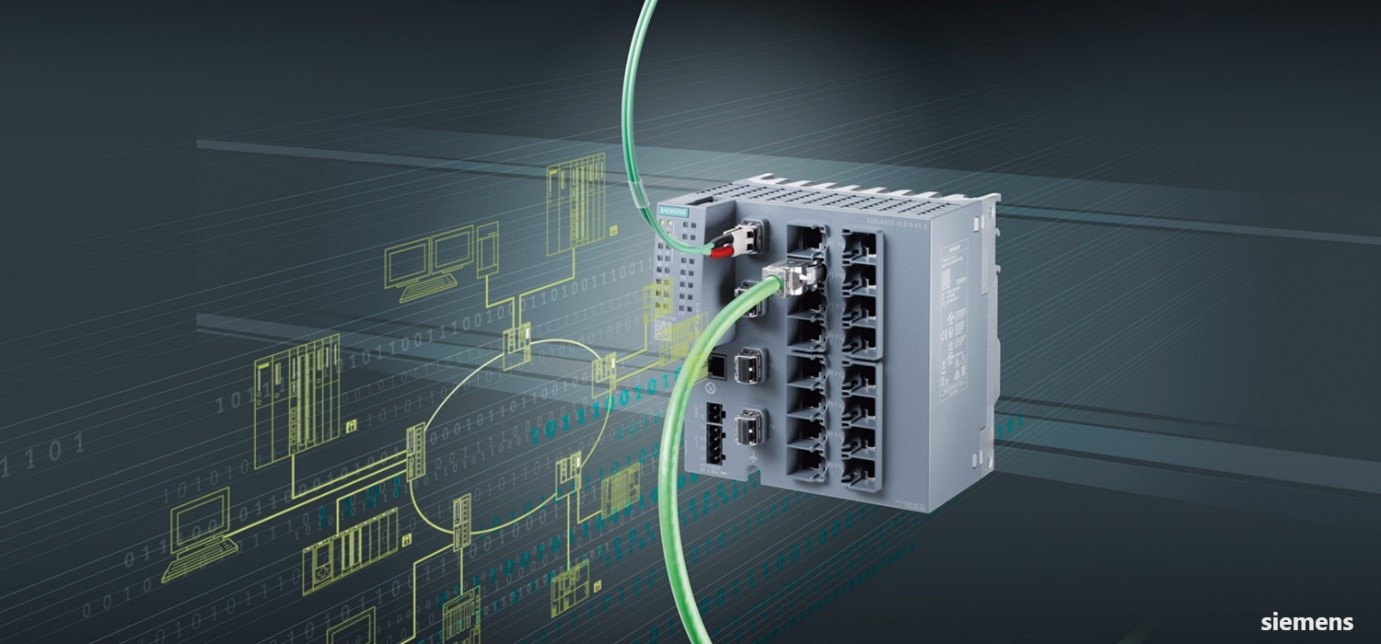From Battlefield Wires to Tactical Data Highways: The Rise of Military Ethernet Switches
Introduction
In the ever-evolving landscape of modern warfare, communication and data exchange play a pivotal role in ensuring the success of military operations. As technology advances, military organizations worldwide are increasingly relying on robust and secure networking solutions. One such critical component is the military Ethernet switch, which forms the backbone of communication networks in the field. This blog explores the evolution of military Ethernet switches and the latest trends shaping their development.
Evolution of Military Ethernet Switches
Military Ethernet switches have undergone a significant evolution since their inception. Originally adapted from commercial counterparts, early military switches faced challenges such as reliability, security, and compatibility when put in the harsh environmental conditions of the battlefield. However, the need for robust and secure networking solutions led to the development of specialized military Ethernet switches. They have been designed to meet the unique demands of military applications.
These switches have evolved to feature robust construction capable of withstanding very high temperatures, vibration, and electromagnetic interference, and shock. The focus on reliability is crucial for ensuring consistent performance in diverse operational environments, ranging from the arctic tundra to desert landscapes.
Key Features of Military Ethernet Switches
Several key features set military Ethernet switches apart from their commercial counterparts as high-level security measures, such as advanced encryption and secure access controls, are crucial in military communications. Redundancy and reliability are critical aspects, with military switches often featuring redundant power supplies and network routes to lower the risk of network failures during critical missions.
Scalability is another crucial feature as military operations vary in scale, and network requirements can change rapidly. Additionally, low latency is prioritized in military Ethernet switches to facilitate real-time communication and data transfer, which is crucial for split-second decision-making in combat situations.
Current Trends in Military Ethernet Switches: Adapting to the Evolving Landscape
The rapidly changing landscape of technology and warfare drives significant developments in military Ethernet switches. As these critical components continue to evolve, several noteworthy trends are shaping their design and functionality to meet the demands of modern military operations.
Cybersecurity Integration: A Top Priority
As a response to the increasing threat environment, cybersecurity has emerged as a top priority in designing military Ethernet switches. These switches are now equipped with advanced cybersecurity features to safeguard sensitive data and ensure the integrity of communication networks. Intrusion detection and prevention systems are implemented to identify and thwart potential threats, while secure boot mechanisms ensure that the switch starts up securely to prevent an unauthorized access. Regular security updates further fortify the switches against evolving cyber threats, providing a robust defence against malicious activities in the digital domain.
Transformation into Multifunctional Platforms
Modern military Ethernet switches are undergoing a transformative shift, evolving into multifunctional platforms that go beyond traditional networking capabilities. The need for enhanced versatility and efficiency in military communication networks drives this shift. These multifunctional platforms now integrate features such as advanced Quality of Service (QoS) for prioritizing and optimizing data traffic, routing capabilities to intelligently direct data packets, and support for Internet Protocol version 6 (IPv6). These features will lead to the adoption of the latest networking protocols.
Edge Computing Influence on Military Networking Solutions
The trend toward edge computing is significantly impacting military Ethernet switches. Edge computing involves processing data in proximity to its origin , reducing latency, and improving the overall data processing efficiency. In the context of military networking solutions, this trend is particularly relevant for supporting emerging technologies such as unmanned systems and autonomous vehicles. Military Ethernet switches are designed to handle the data processing demands of these technologies at the network's edge. They will ensure real-time decision-making and responsiveness in the dynamic operational environments.
Reducing Latency for Enhanced Performance
Low latency remains a critical consideration in military Ethernet switches, especially in combat situations where split-second decisions can be a matter of life and death. The incorporation of edge computing, along with optimized networking protocols and hardware enhancements, contributes to reducing latency. This focus on minimizing delay in data transmission enhances the overall performance of military networks. It will also support the timely and reliable exchange of information among various units and systems.
Future-Proofing for Emerging Technologies
The trends in military Ethernet switches also reflect a forward-looking approach to accommodate emerging technologies. As the military landscape continues to evolve, these switches are designed to be adaptable and scalable, ensuring compatibility with future innovations. This future-proofing enables military organizations to integrate new technologies seamlessly into their existing infrastructure, maintaining a responsive and cutting-edge communication network.
Interoperability and Standardization in Military Ethernet Switches
In the complex landscape of modern warfare, military forces employ diverse equipment sourced from various manufacturers. In this case, achieving interoperability and adhering to industry standards become paramount considerations. It refers to the ability of different systems and equipment to work seamlessly, facilitating efficient communication and collaboration among military units and allied forces. This synergy is particularly crucial in dynamic and rapidly evolving operational environments.
Interoperability Challenges:
The inherent challenge arises from the fact that military forces may utilize equipment and technology from different vendors, each with its own specifications and communication protocols. Without a standardized approach, these disparate systems may struggle to communicate effectively. This will lead to potential inefficiencies, delays, and even mission-critical failures.
Military Ethernet Switches as Key Enablers:
Military Ethernet switches play a pivotal role in addressing the challenges associated with interoperability. These switches are designed to not only meet the specific requirements of military applications but also act as intermediaries. This will facilitate communication between different devices and systems. Military Ethernet switches create a unified and interoperable network infrastructure by serving as the central communication hub.
Adherence to Industry Standards:
To achieve seamless interoperability, the military establishes and adheres to industry standards. Organizations such as the Defense Information Systems Agency (DISA) play a central role in defining and promoting these standards. The DISA, for instance, provides guidelines and specifications that help ensure compatibility and interoperability across various military systems and networks.
Benefits of Standardization:
Standardization efforts bring several benefits to military operations. Firstly, they enhance collaboration by enabling different units, services, and allied forces to share information and resources effectively. Secondly, standardized protocols streamline the integration of new technologies and equipment into existing networks, promoting flexibility and scalability. Moreover, the adherence to industry standards simplifies maintenance, training, and troubleshooting processes, reducing the complexity of managing a diverse array of equipment.
Ensuring Future-Proof Networks:
The rapid pace of technological advancement requires military organizations to plan for the future. By incorporating standardized protocols in the design of military Ethernet switches, these networks can remain flexible and adaptable to emerging technologies. This forward-thinking approach ensures that military forces can seamlessly integrate new equipment and systems into their existing infrastructure, maintaining a state-of-the-art and future-proof network.
Collaboration Across All Domains:
In contemporary military operations, collaboration often extends beyond national borders, involving multinational coalitions and joint forces. Standardization not only facilitates interoperability within a single military force but also promotes collaboration among different nations and branches of the military. This collaborative approach enhances the effectiveness of joint operations and strengthens the overall capabilities of allied forces.
Conclusion
Military Ethernet switches remain a critical component of modern military communication networks. They will continually adapt to the evolving landscape of warfare. The ongoing evolution and trends in cybersecurity, multifunctional platforms, edge computing, interoperability, and energy efficiency reflect the industry's commitment to meeting the unique challenges military organizations across the world face. As technology advances, military Ethernet switches will continue to play a pivotal role in enhancing the effectiveness and efficiency of military operations on the battlefield.
About the Author
 Shankar Nishant is a researcher at Next Move Strategy Consulting with a cumulative experience of more than four years. Shankar is enthusiastic about new technology, enjoys working with diverse global clients, and has delivered numerous market reports in multiple domains. He can be reached at shankar.dutta@nextmsc.com
Shankar Nishant is a researcher at Next Move Strategy Consulting with a cumulative experience of more than four years. Shankar is enthusiastic about new technology, enjoys working with diverse global clients, and has delivered numerous market reports in multiple domains. He can be reached at shankar.dutta@nextmsc.com


Leave a Reply